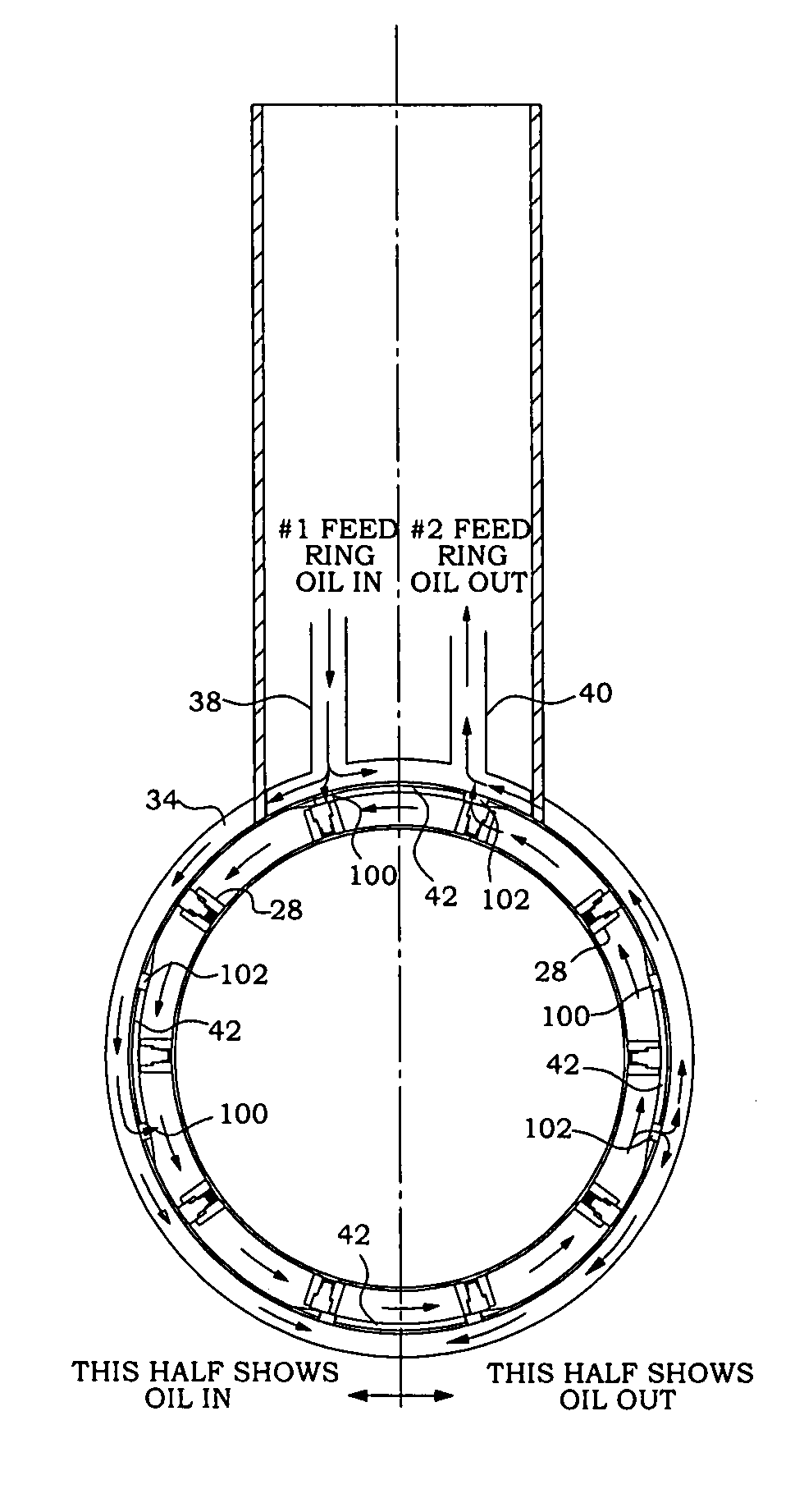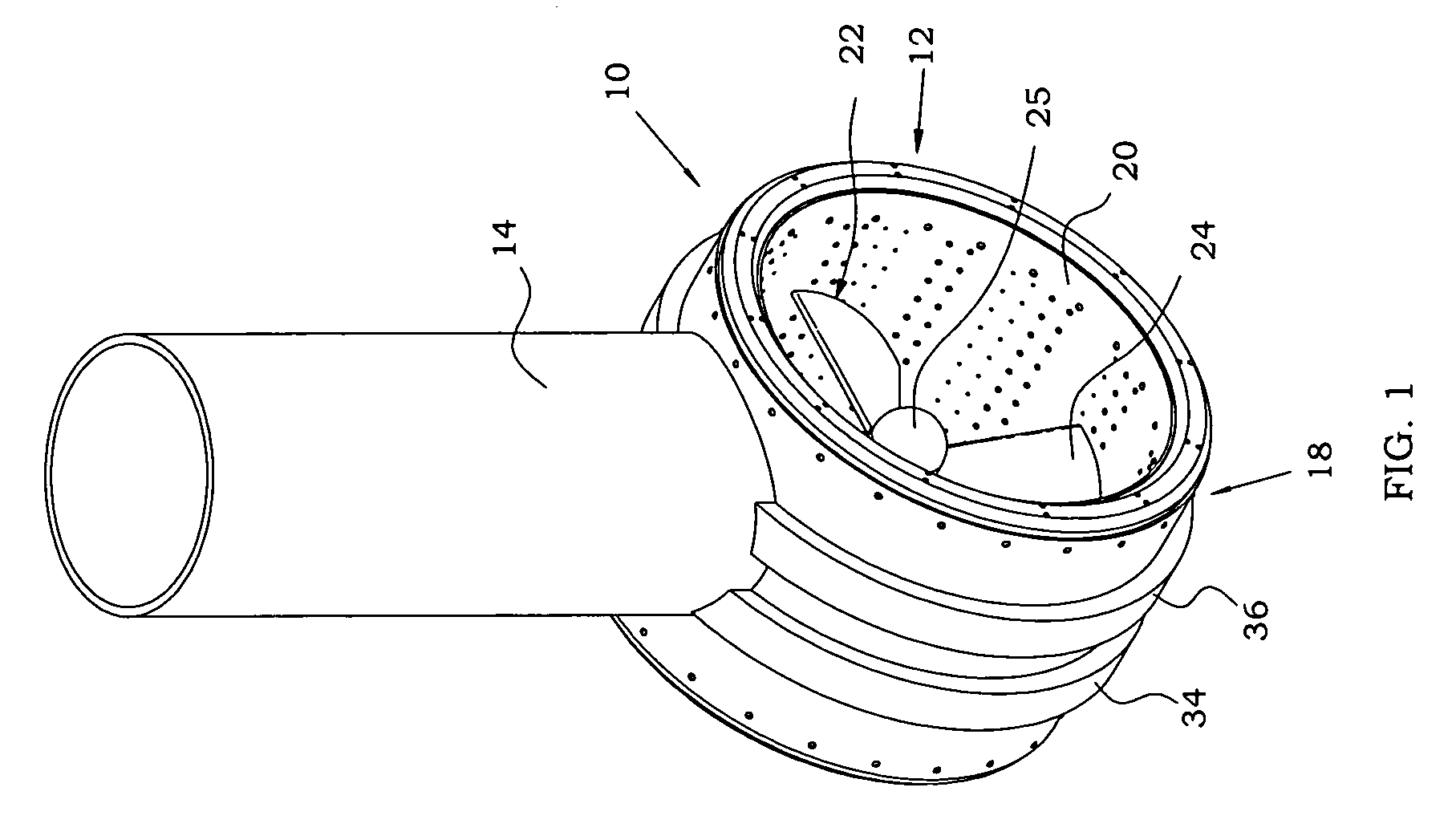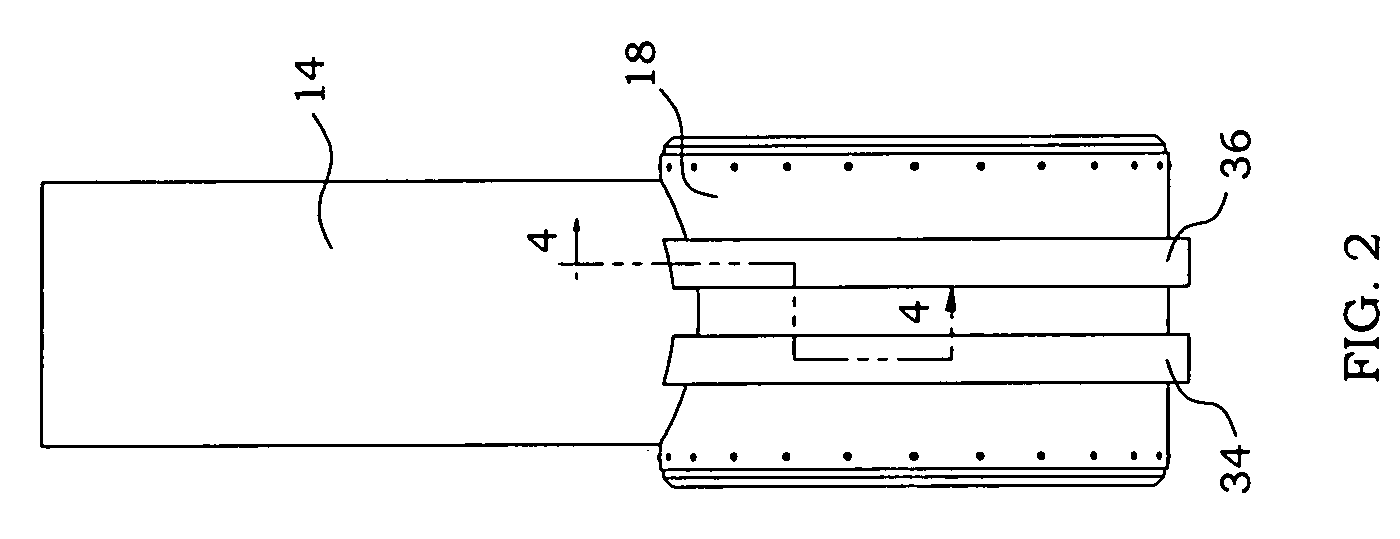Shaftless radial vane rotary device and a marine propulsion system using the device
a rotary device and radial vane technology, applied in the direction of motor-driven power plants, special-purpose vessels, vessel construction, etc., can solve the problems of difficult and expensive production of the vane-supporting slots of the known device, the device has not met with wide-spread acceptance, and all of the above would appear to present severe maintenance problems
- Summary
- Abstract
- Description
- Claims
- Application Information
AI Technical Summary
Benefits of technology
Problems solved by technology
Method used
Image
Examples
Embodiment Construction
[0051]Referring now to the drawings in detail, a first embodiment of a radial vane rotary motor embodying the invention is illustrated as a drive unit for a marine propulsion system designated generally at 10 in FIG. 1, and includes a cylindrical tubular hydraulic motor 12 supported on a hollow, preferably cylindrical support post 14 which, in use, projects through the hull of a vessel (not shown) and is supported for pivotal or rotary movement about its longitudinal or vertical axis 16. The motor 12 consists of a generally cylindrical stator 18 rigidly mounted, as by welding, on the downwardly projecting end of support post 14, and a rotor 20 rotatably mounted in stator 18.
[0052]As best seen in FIGS. 1 and 3, the rotor 20 includes a propeller 22 having a plurality of blades 24 supported on a hub 25. Propeller 22 may be of a standard or commercial marine propeller design, with the tips of the blades 24 rigidly joined, as by welding or bolting, to the inner periphery of a tubular rot...
PUM
 Login to View More
Login to View More Abstract
Description
Claims
Application Information
 Login to View More
Login to View More - R&D
- Intellectual Property
- Life Sciences
- Materials
- Tech Scout
- Unparalleled Data Quality
- Higher Quality Content
- 60% Fewer Hallucinations
Browse by: Latest US Patents, China's latest patents, Technical Efficacy Thesaurus, Application Domain, Technology Topic, Popular Technical Reports.
© 2025 PatSnap. All rights reserved.Legal|Privacy policy|Modern Slavery Act Transparency Statement|Sitemap|About US| Contact US: help@patsnap.com



